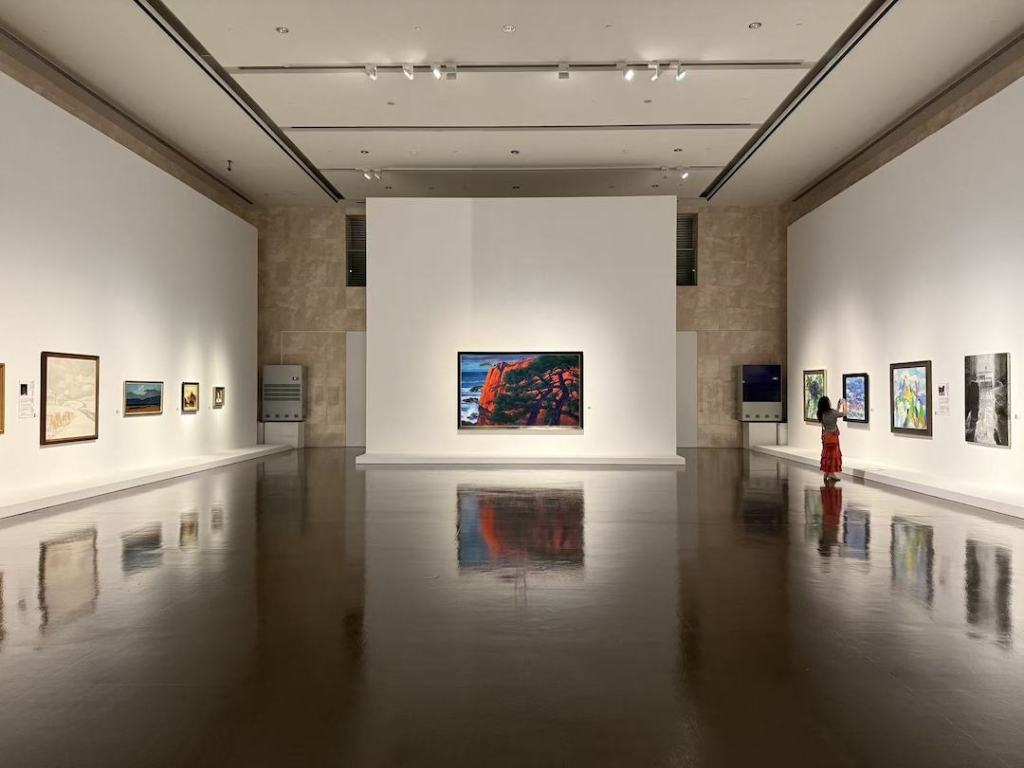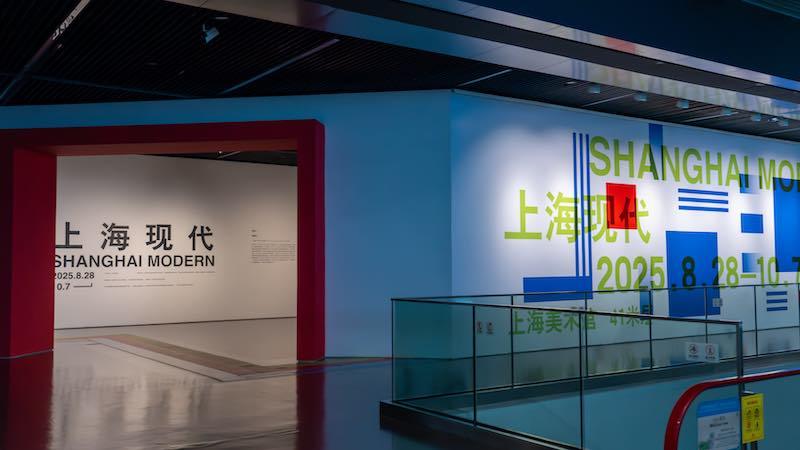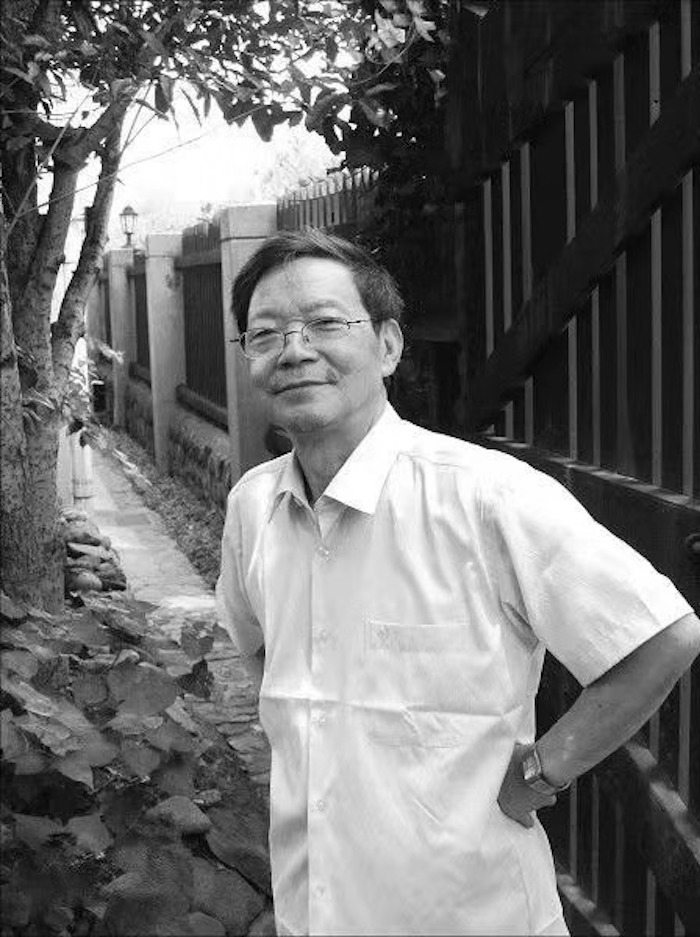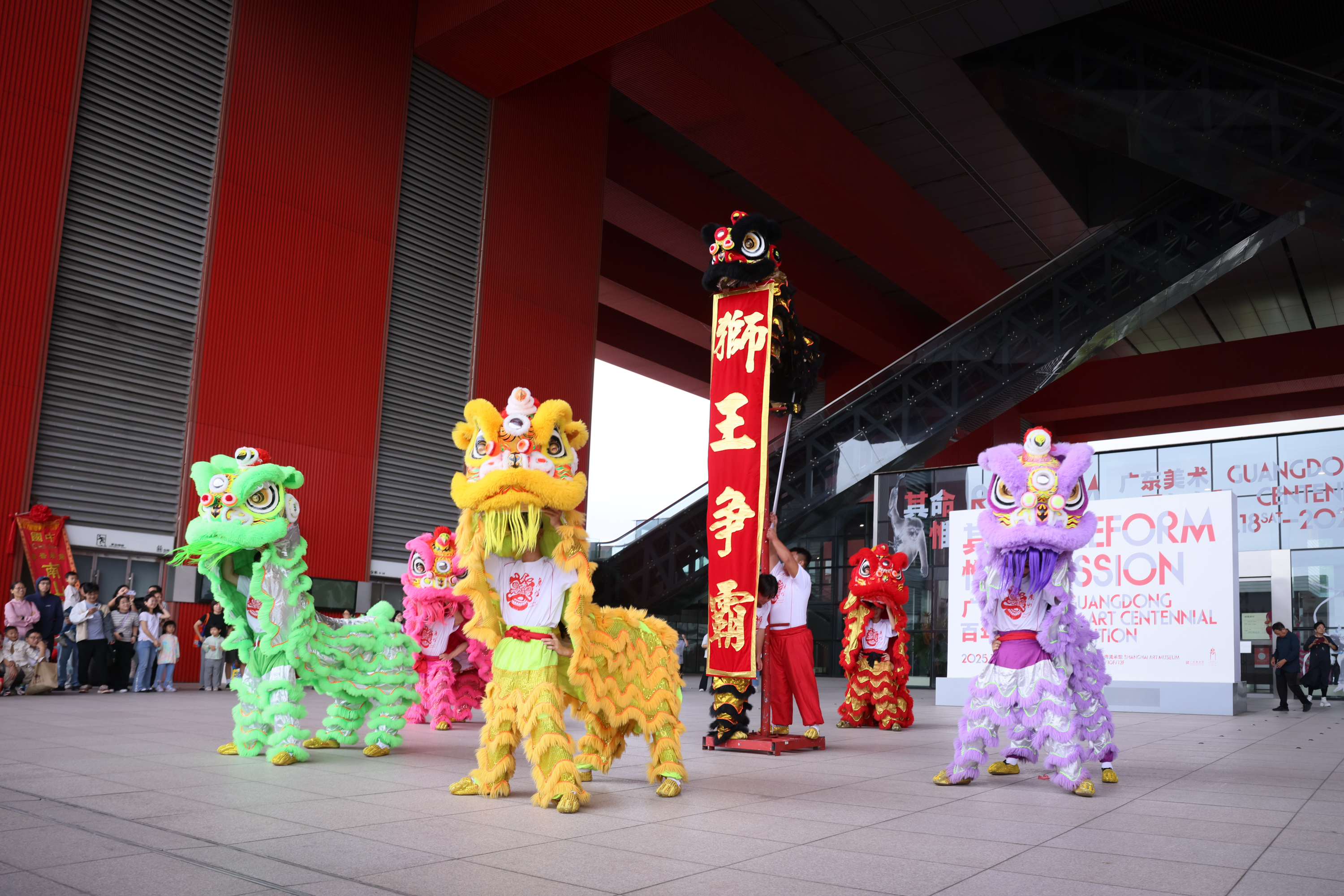
On the afternoon of October 18, a unique Lingnan-style intangible cultural heritage Yingge dance and lion dance performance was being performed on the outdoor platform of the Shanghai Art Museum (China Art Palace). Accompanied by the leaping of the lion dance and the sound of sonorous Yingge dance, the 24th China Shanghai International Art Festival Guangdong-Hong Kong-Macao Greater Bay Area Cultural Week and the "Its Mission is to Be New - Guangdong Art Centennial Exhibition" kicked off.
The Paper has learned that the "Guangdong-Hong Kong-Macao Greater Bay Area Cultural Week," the inaugural event of the China Shanghai International Art Festival, will showcase the cultural innovation and diverse charm of the Guangdong-Hong Kong-Macao Greater Bay Area through a series of events, including art exhibitions, stage performances, and intangible cultural heritage performances. Among them, the "Innovation in the Spirit: A Century of Guangdong Art" exhibition, featuring works by over 350 renowned Lingnan artists from modern and contemporary times, showcases the innovative journey and brilliant achievements of Guangdong art over the past century, tracing the story of cultural exchange and integration between Guangdong and Shanghai.
The Guangdong-Hong Kong-Macao Greater Bay Area Cultural Week is co-organized by the Publicity Department of the Guangdong Provincial Party Committee, the Department of Culture and Tourism of Guangdong Province, the Publicity Department of the Shanghai Municipal Party Committee, the Shanghai Municipal Culture and Tourism Bureau, the Culture, Sports and Tourism Bureau of the Government of the Hong Kong Special Administrative Region, and the Cultural Affairs Bureau of the Government of the Macao Special Administrative Region. From October 18 to November 15, it will vividly showcase the cultural innovation vitality and diverse charm of the Guangdong-Hong Kong-Macao Greater Bay Area through art exhibitions, stage performances, intangible cultural heritage "Art Sky" outdoor performances, art education, international performing arts conferences, international dialogues and other activities, and promote the in-depth integration of cultures of the two places and take innovative development to a new level.
"Art Week" kicks off with Lingnan intangible cultural heritage performances and Cantonese opera singing

A swift lion dance pranced before the Shanghai Art Museum (China Art Museum), and sonorous English songs filled the air. On the afternoon of October 18th, at the opening ceremony, the internationally renowned Lingnan intangible cultural heritage performances—the Guangzhou Nan Guo Lion Dance Troupe and the Puning Nanshan Yingge Troupe—joined forces in front of the China Art Museum, captivating audiences. During the "Guangdong-Hong Kong-Macao Greater Bay Area Cultural Week," several intangible cultural heritage performances rooted in Lingnan will make their debut in Shanghai.

Live performance of "Lion King Battle"

The Guangzhou Nanguo Lion Dance Troupe was founded in 1994 by Zhao Weibin, the fifth-generation heir of the "Zhao Family Lion Dance." Their live performance of the classic show "Lion King Battle" blends dance, martial arts, and music, vividly showcasing the exquisite skills and unique charm of the Guangdong Lion Dance, a national intangible cultural heritage. The Puning Nanshan Yingge, inherited from the Ming Dynasty and based on the heroic stories of "Water Margin," is known as the "Chinese War Dance" for its majestic momentum. In the show "Heroic Wind," dancers, painted with the facial makeup of Water Margin heroes, perform Southern Fist horse stances, accompanied by the sound of gongs and drums, each leap bursting with passion.

Lion dance performance (Photo by Ye Chenliang)

Yingge performance
At the opening ceremony at the 49-meter-high lobby of the Shanghai Art Museum, three exceptionally large-scale works by renowned Lingnan artists were displayed in a magnificent display. Among them, the 11-meter-high "Welcoming Pine," created by painter Li Xiongcai in 1975, made its Shanghai debut. The painting depicts majestic peaks shrouded in misty clouds in the distance, while the foreground depicts the Welcoming Pine, a vibrant and unrestrained image. This work has previously been exhibited in Guangdong and Hong Kong, leaving a lasting impression and fond memories. The other two works, by artists Li Jinkun and Xu Qinsong, collectively capture the creative styles of representative artists of the Lingnan School from different periods.

Opening ceremony guest photography: Cai Qing

Performance of the ancient Cantonese opera "Double Embroidery Fate" (Photo by Ye Chenliang)
The opening ceremony was attended by provincial and municipal leaders from Guangdong, Hong Kong, Macao, and Shanghai, along with renowned domestic artists and representatives from various sectors. The Guangzhou Cantonese Opera Company performed excerpts from the newly adapted, period Cantonese opera "Double Embroidered Fate," which drew enthusiastic applause. Eight Shanghai residents from various fields were awarded the honorary title of "Guangdong Art Centennial Exhibition Promotion Ambassadors." They will encourage more residents to visit the exhibition, appreciate and understand Guangdong art, and promote closer cultural exchange between Guangdong and Shanghai.


Opening ceremony scene (Photo by Ye Chenliang)

Opening ceremony scene (Photo by Ye Chenliang)
An exhibition showcasing the classics of Guangdong art
As a key component of Cultural Week, the "Innovation: A Century of Guangdong Fine Arts Exhibition" officially opened that day. Bringing together representative works by over 350 renowned Lingnan artists, spanning modern and contemporary times, the exhibition, spread over 20,000 square meters, systematically charts and comprehensively showcases the innovative journey and brilliant achievements of Guangdong fine arts over the past century.

Exhibition site
The exhibition spans the 8th, 10th, and 12th floors of the China Art Museum. A 33-meter circular multimedia screen on the 8th floor showcases classic Lingnan art through a cacophony of light and shadow, offering visitors an immersive artistic experience. A 300-meter-long historical gallery provides visitors with a glimpse into the evolution of Guangdong art over the past century.

Cross-border song and dance performances at the exhibition
It can be said that the more than 800 Guangdong art works on display are a vivid history of the development of Guangdong art.
The exhibition is divided into seven thematic sections and three special projects, namely "Standing at the Forefront - Western Painting Movement in Guangdong", "Art Revolution - Lingnan School of Painting and Chinese Painting Research Association", "Dagger and Spear - Emerging Woodcut Movement and Cartoons", "Passionate Years - Serving the People and Singing Odes to the Times", "Opening and Reforming - Guangdong Art in Reform and Opening Up", "A Hundred Flowers in Bloom - Innovation and Creation Reach New Heights" and "Wind Rising in the South - Contemporary Art Practice".
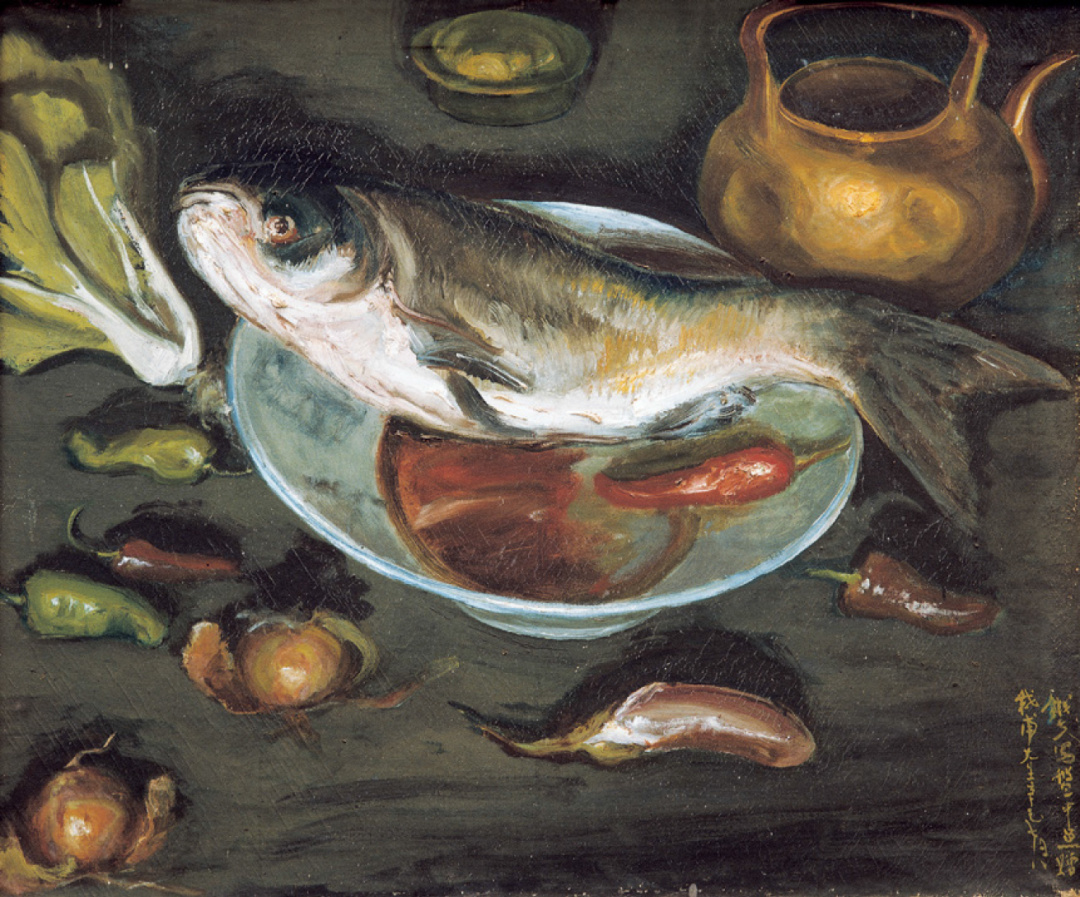
Li Tiefu, "Fish on a Plate", oil painting, 82cm×97cm, collected by Guangdong Museum of Art, 1941
In the "Western Painting Movement in Guangdong" section, paintings by artists such as Li Tiefu, Guan Liang, Lin Fengmian, Yu Ben, Situ Qiao, and Guan Zilan are exhibited, presenting the precious results of the pioneers in the oil painting world.
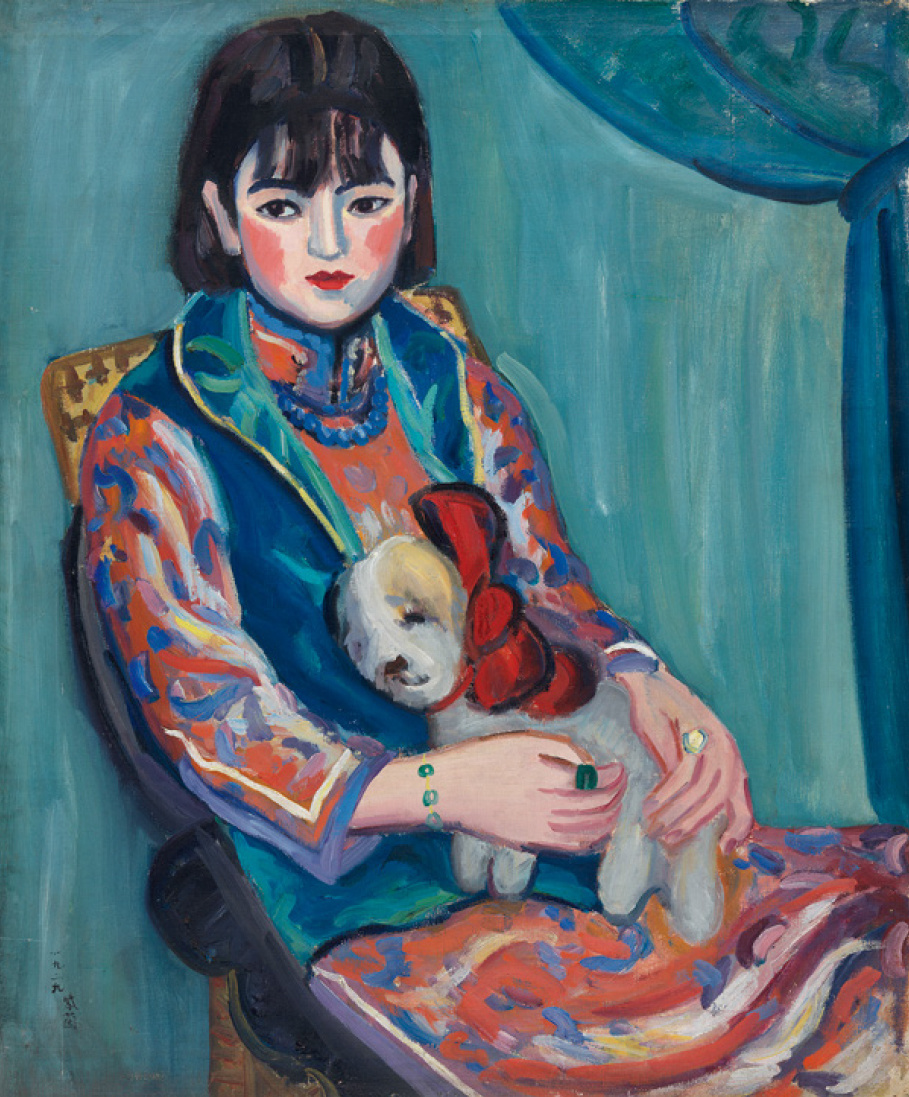
Guan Zilan, Portrait of a Girl, oil painting, 90cm×75cm, 1929, collection of the National Art Museum of China
The "Lingnan School of Painting and the Chinese Painting Research Society" section, a key focus of the exhibition, showcases the fundamental academic trajectory of the Lingnan School and its philosophy of "combining Chinese and Western influences, integrating the past and the present" through the works of three members of the Lingnan School: Gao Jianfu, Gao Qifeng, and Chen Shuren. It also highlights the heated debate between the Chinese Painting Research Society and the Lingnan School over their differing approaches. Beginning with Gao Jianfu's flower-bird and landscape paintings, the exhibition explores at various levels how these pioneers of the Lingnan School initiated the school's early explorations through their brushes.

Exhibition site
"The Emerging Woodcut Movement and Cartoons" focuses on Guangdong's printmaking and cartooning creation, exhibiting prints by printmakers such as Huang Xinbo, Chen Tiegeng, Gu Yuan, Li Hua, and Hu Yichuan, and cartoons by cartoonists such as Liao Bingxiong and Li Fanfu. It shows how Guangdong artists participated in the emerging woodcut movement in the 1930s and 1940s, and how cartoonists used their brushes as weapons and the practice of artistic innovation to make historical contributions to national salvation.

Gu Yuan Renqiao, 1948 woodblock print, 20.5cm×36cm, from the collection of Gu Yuan Art Museum, Zhuhai
The exhibition's special program features Guan Shanyue and Li Xiongcai as "Case Studies of Lingnan Artists." Both are key figures in the second generation of the Lingnan School of Painting. They not only exemplified the philosophy of "eclecticism between East and West, blending the past and the present," but also nurtured it to new heights. They embody the key threads of the Lingnan School from its founding to its maturity. Works on display include Guan Shanyue's "Green Great Wall" and "A Hundred Miles of the Li River," and Li Xiongcai's "Welcoming Pine" and "Sunset at Huanghuagang."

Green Great Wall, Guan Shanyue, 1974, Chinese painting, 232×396cm, Collection of the National Art Museum of China
The exhibition also focuses on the present, recording the changes in the style of the times, from the changes in the special economic zones after the reform and opening up, to the landscape of the special economic zones and the Greater Bay Area in the new era, showing the unique style and innovative spirit of Guangdong art.
Continuing the Indissoluble Bond between the Lingnan School of Painting and the Shanghai School
The exhibition in Shanghai is also a systematic review of the history of artistic integration between the two places. While showing the trajectory of Guangdong art's century-long innovation, it also builds a dialogue platform for the current art circles of the two places.

Exhibition view (Photo by Ye Chenliang)
In 1912, the "Two Gaos and One Chen" from Guangzhou—Gao Jianfu, Gao Qifeng, and Chen Shuren—founded the Meishu Bookstore in Huifuli, Fuzhou Road, Shanghai. Using the "Truth Pictorial" as their banner, they published "New Painting Methods," compiled by Chen Shuren, in its first issue, heralding a revolution in Chinese painting. This small building, tucked away in an alleyway, became a hub for artistic innovation and the true cradle of the Lingnan School of Painting.
The historic name "Lingnan School" was also significantly influenced by the Shanghai School master Liu Haisu. In his preface to the 1934 "Exhibition of Modern Chinese Painting" in Berlin, Germany, he first clearly defined the artistic explorations of the "Two Gaos and One Chen" as "Lingnan School," moving beyond "eclecticism" to become the "Lingnan School." This established the notion that "eclecticism" was synonymous with the "Lingnan School."
During the modern transformation of Chinese art, both the Lingnan and Shanghai schools embraced the mission of "breaking the shackles of tradition," rejecting conventional wisdom and actively absorbing external influences. "The Shanghai school embodies the secular sentiments nurtured by a commercial city, while the Lingnan school is imbued with a sense of patriotism fueled by national crisis. The Shanghai school emphasizes the creative transformation of traditional brushwork, while the Lingnan school emphasizes the systematic innovation of realistic techniques."

Lin Fengmian, Lady in Blue, Chinese painting, 1960s, 66cm×69cm, Collection of Shanghai Art Museum
Numerous works on display at the exhibition showcase the artistic and cultural ties between Guangdong and Shanghai. Guangdong-born painter Lin Fengmian began his artistic studies in Shanghai, and Guan Liang also taught at the Shanghai Academy of Fine Arts. A dedicated section dedicated to these two artists showcases the artistic interaction between the Lingnan and Shanghai schools of painting. The "color ink painting" "Lady in Green" on display is a classic example of Lin Fengmian's artistic exploration. While in Shanghai, Guan Liang was fascinated by opera, frequently visiting theaters to immerse himself in the demeanor of characters and even learning the art himself. This obsession was translated into the vivid brushwork of "The Three Strikes on the White Bone Demon," with its exaggerated facial makeup and dynamic gestures, imbued with the tension of operatic art and imbued with Western Expressionist characteristics.

Guan Liang's Three Strikes on the White Bone Demon, 1978, Chinese painting, 179cm×96cm, Collection of Guangdong Museum of Art
The exhibition hall also features a Lingnan cultural heritage experience area. After viewing the exhibition, visitors can relax and enjoy tea at the museum, experiencing the "Cantonese flavor" through morning tea culture and cultural and creative products. During the exhibition, the Guangdong Museum of Art and the Shanghai Art Museum jointly organized and presented 12 high-quality and in-depth "Lingnan Cultural Masters Lectures." Additionally, the exhibition will feature numerous "Shanghai Art Museum Live Teaching Classes," painting experiences, expert guided tours, Artwalks, and art talk shows. The exhibition will run until January 18, 2026.
It is reported that during this cultural week, a total of 7 programs and 14 stage plays will be performed in multiple venues in Shanghai, covering various art types such as dance drama, Cantonese opera, drama, ballet, acrobatics, etc., all of which are original masterpieces of the Guangdong-Hong Kong-Macao Greater Bay Area in recent years, and together they demonstrate the distinctive characteristics of the Bay Area's diverse symbiosis, integration and innovation in literature and art.
